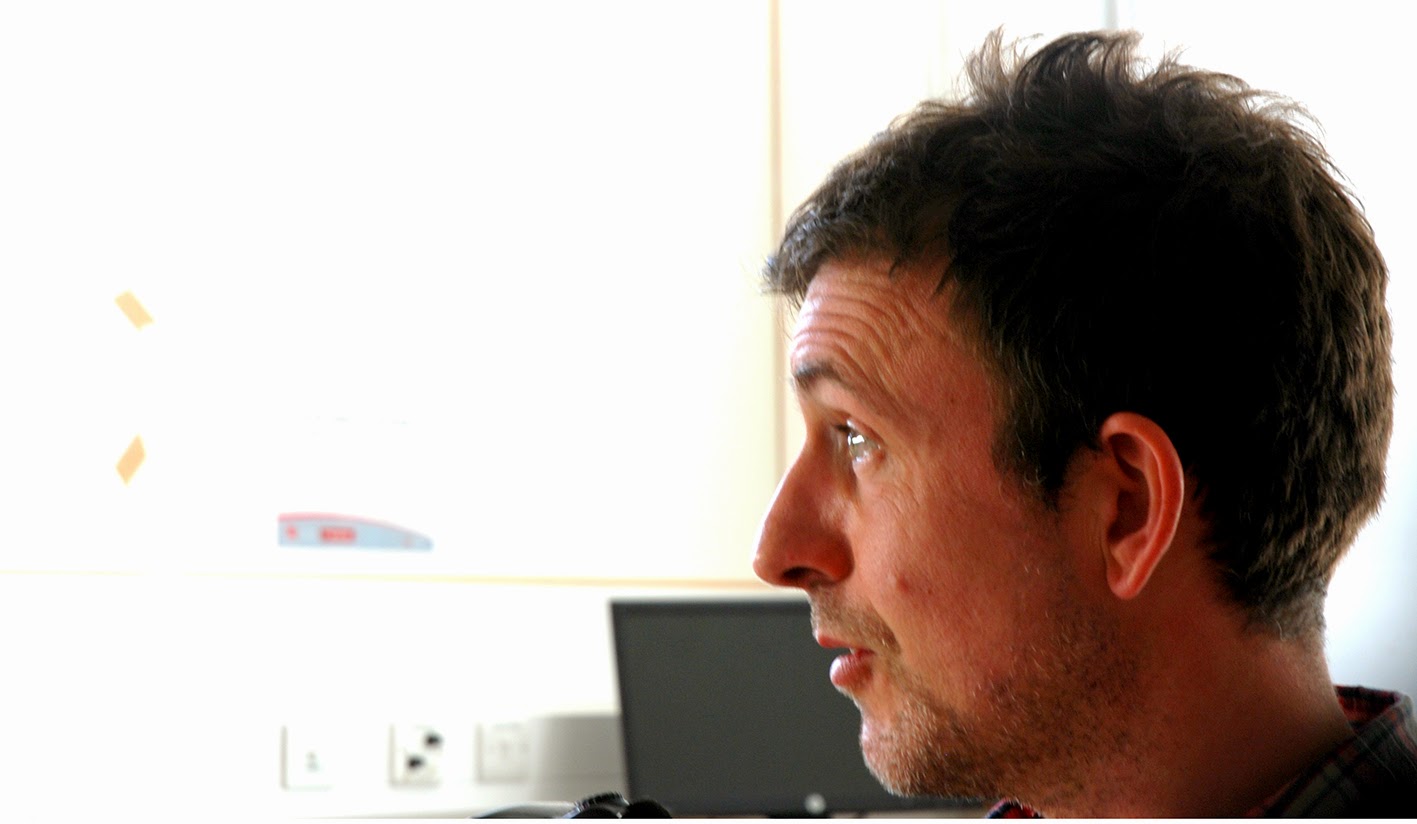Sam Ebell
 |
| George Wood with too much light |
Introduction to Digital Photography
The camera (whether using film, digital, mobile) could be described as an additional eye. This mechanical eye has the ability to tangibly capture and hold ones environment, depict ones emotions and retain memories in solid form using a combination of light and the artist's imagination. This eclectic mix, in turn allows a palpable insight into the photographer's mind and is an evocation of their own creative journey,
 |
| 'Chris' enigmatic as ever. |
 |
| 'Liz' playing with depth of field |
With a Nikon D80 Digital SLR camera we began our Introduction to the Digital Photography workshop session; dissecting the mechanics of the camera with George Wood, who, despite the heat of the studio room, and this being our first session back after the Christmas vacation, made the complexities of the Aperture, Shutter speed, FStop, White Balance and the Light Meter accessible and interesting. I learnt about 'Focal Distance', (the distance between the lens to the corresponding focal plane) and found that by zooming in to decrease the focal length, the image produced was more distorted than if the image was taken with a lens zoomed out. This created a more natural (eye view) photograph retaining an image which appears more like the one you see with your own eyes. (The optimum Focal length is 50 mm).
The scientific nature of the information imparted made my brain quiver a little in my head (like lemon jelly) but I remained focussed and, along with my fellow students, attempted to retain this smorgasbord of data in such a small, hot space. Therefore, with my physics head on, George led us on a journey of discovery highlighting the three main areas of importance when using a digital SLR (single lens reflex) camera - Aperture, Shutter speed and ISO.
Aperture sizes change the 'Depth of Field', ie. how much of your chosen photograph appears sharp and in focus. The smaller the aperture setting, the smaller the area of focus. The Aperture is an adjustable iris: the more dilated the aperture the more light enters the camera. The Shutter speed is the time taken to open and close the lens of the camera to allow light in - the longer the shutter is open the more light enters the through the camera lens, the shorter, less light. The ISO reading is the sensitivity of the sensor within the camera to light- which relates to film speed. (The higher the ISO the more sensitive to light the camera becomes. This setting also refers to film speed.) It boosts the sensitivity to light which in turn affects the images taken.
 |
| 'Scary Lady' experimenting with Camera Raw 'clarity' settings. |
We were all released into the wilderness to capture moments in time relevant or irrelevant, diverse or obvious. I took a range of textural images, finding it difficult to get to grips with the manual settings - focussing and retaining the correct aperture and shutter speed so that my photographs were not blurred and actually appeared in the viewfinder. Many of my images were too dark or else looked like they were covered in a fine layer of soot. However, as time went on the process, although complicated, was rewarding.
From here our images were transferred onto the computer and imported into Photoshop via Camera Raw software. This software is extremely versatile for 'non destructive' editing giving much more control over contrast, white balance, exposure and saturation of photographic imagery before editing and retouching commences using Photoshop. In this programme one is also able to batch process and synchronise specific image settings (useful if working with a series of photographs).
 |
| 'Graffiti' Automatic Aperture example |
 |
| Rosemary's Baby - automatic aperture and shutter speed |
Photography is a way of feeling, of touching, of loving. What you have caught on film is captured forever... it remembers little things, long after you have forgotten everything.
Aaron Siskind
To me, photography is an art of observation. It's about finding something interesting in an ordinary place... I've found it has little to do with the things you see and everything to do with the way you see them.
Elliott Erwitt
Photography takes an instant out of time, altering life by holding it still.
Dorothea Lange
No comments:
Post a Comment